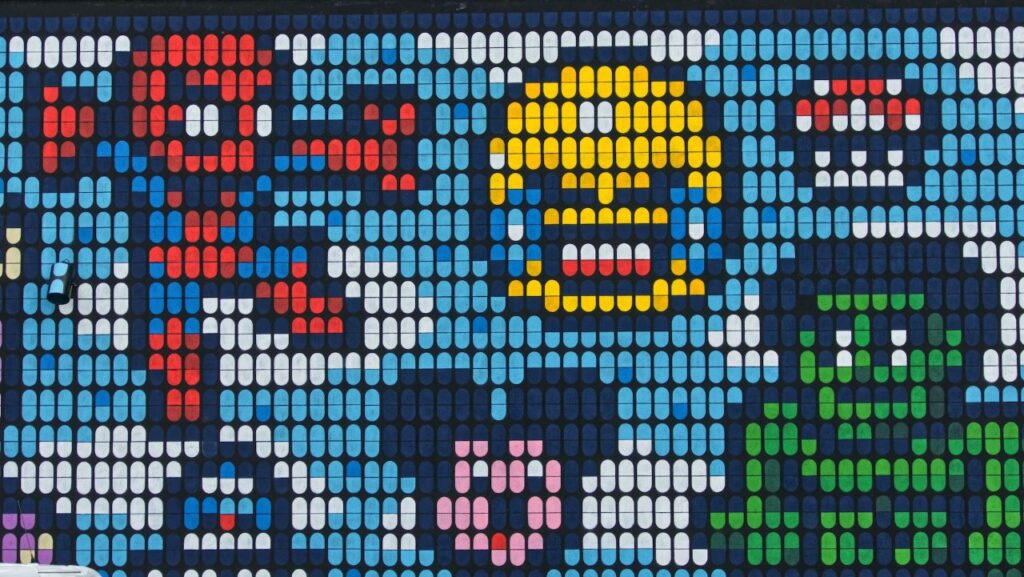The world of video games has come a long way since its inception. From simple pixelated characters to stunningly realistic virtual worlds, the evolution of video game graphics has been nothing short of astonishing. But beyond the technical advancements, video game graphics have also evolved into an art form, showcasing the talent and creativity of artists who have left an indelible mark on the industry. In this article, we will take a journey through time to explore the milestones that have shaped the video game industry, highlighting the contributions of artists and their influence on the visual landscape. Join us as we delve into the captivating history of video game graphics.
As an Amazon Associate Jartan Media earns from qualifying purchases.
The Early Years: Pixelated Beginnings
In the late 1970s and early 1980s, video games were born in the form of pixelated screens with limited colors and primitive graphics. It was during this era that early pioneers of video game art laid the foundation for what was to come. While the technical constraints were significant, artists found creative ways to express themselves through limited pixel art. Titles like Pong, Space Invaders, and Pac-Man may seem rudimentary by today’s standards, but they hold a special place in the hearts of gaming enthusiasts as the first canvas upon which video game artists painted their visions.
The 16-Bit Era: A Leap Forward in Visuals
The 16-bit era in the mid-1980s marked a significant advancement in video game graphics. With more powerful hardware, developers could create more detailed characters and environments, and artists embraced the opportunity to breathe life into their creations. Iconic consoles like the Super Nintendo and Sega Genesis brought us timeless classics such as Super Mario World, The Legend of Zelda: A Link to the Past, and Sonic the Hedgehog. These games not only revolutionized gameplay but also showcased the evolving artistry of video games.
The 3D Revolution: Immersive Gaming Worlds
The mid-1990s ushered in the 3D revolution in gaming, taking players from 2D worlds to immersive 3D environments. This shift was made possible by consoles like the Sony PlayStation and Nintendo 64. Game developers and artists faced new challenges and possibilities as they navigated the transition to three-dimensional spaces. Games like Super Mario 64, Final Fantasy VII, and The Legend of Zelda: Ocarina of Time left a lasting impact on the industry, not only for their groundbreaking gameplay but also for the visual storytelling and artistic achievements that set new standards for video game art.
High-Definition Gaming: A Visual Feast
In the mid-2000s, high-definition (HD) gaming became the new standard. Consoles like the Xbox 360 and PlayStation 3 brought unprecedented levels of realism and detail to video game graphics. As technology advanced, so did the techniques of video game artists. They used their artistic prowess to create visually stunning worlds that immersed players in breathtaking landscapes and emotional narratives. Games like Grand Theft Auto V, The Last of Us, and Halo 4 showcased the power of art in eliciting emotions and shaping players’ gaming experiences.
The Present and Beyond: Real-Time Ray Tracing and Beyond
As we enter the current era of gaming, the focus is on real-time ray tracing and advanced graphical technologies. Modern gaming PCs and next-gen consoles, like the PlayStation 5 and Xbox Series X, offer cutting-edge visuals that push the boundaries of realism. Video game artists now work with tools and techniques that rival those of traditional artists, creating jaw-dropping landscapes and character designs. Games like Cyberpunk 2077, Assassin’s Creed Valhalla, and Horizon Forbidden West showcase the impressive capabilities of these systems and the artistic mastery that brings these virtual worlds to life.
Conclusion
The evolution of video game graphics has been a remarkable journey, from the humble pixelated beginnings to the breathtaking realism of today’s gaming experiences. Throughout this evolution, video game artists have played a pivotal role, infusing their creativity, passion, and talent into every frame. They have transformed video games into an art form that captivates players and transcends the boundaries of technology.
Happy gaming!
